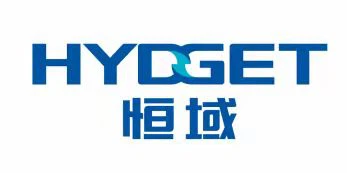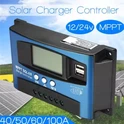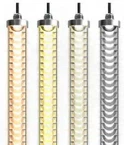Power transmission hardware, often referred to as power fittings, plays a critical role in ensuring the safe and efficient distribution of electricity across grids. These components are designed to connect, support, and protect electrical conductors, enabling reliable power flow from generation plants to end-users. For companies like Hydget, which specialize in exporting high-quality power transmission equipment, understanding the diversity and functionality of these fittings is crucial for meeting global market demands. Below, we explore the common types of power transmission hardware, their specific roles, and the features that make them indispensable in modern electrical systems.
Understanding Power Transmission Hardware
Power transmission hardware encompasses a wide range of components used to secure, join, and insulate conductors in overhead and underground power lines. These fittings must withstand extreme environmental conditions, including high voltages, mechanical stress, and corrosion, while maintaining electrical integrity. The choice of materials-such as aluminum, copper, or composite alloys-directly impacts their durability and performance
.
The design and application of these fittings vary based on their function within the power network. For instance, suspension clamps are optimized for dynamic loads in overhead lines, while dead-end clamps provide rigid termination points. Similarly, connectors and splices must ensure low-resistance joints to minimize energy loss during transmission.
Common Types of Power Transmission Hardware and Their Functions
1. Suspension and Dead-End Clamps
Suspension clamps are used to hang conductors from transmission towers or poles, allowing flexibility to accommodate wind-induced movement. They typically feature a hinged design to reduce stress on the conductor. Dead-end clamps, on the other hand, provide fixed termination points for conductors at poles or substations, ensuring no longitudinal movement. Both types are critical for maintaining structural stability in overhead lines.
Key Features:
Made from forged aluminum or ductile iron for high tensile strength.
Corrosion-resistant coatings (e.g., hot-dip galvanization) extend service life.
Ergonomic designs to prevent conductor damage during installation.
2. Connectors and Splices
Connectors are used to join conductors end-to-end or to other components like insulators. Compression connectors, for example, create permanent, low-resistance joints by crimping metal sleeves onto conductors. Splice connectors are specialized for repairing broken conductors or extending lines without compromising conductivity.
Key Features:
Precision-engineered to match conductor diameter and material (e.g., copper or aluminum).
Thermal stability to handle high current loads without degradation.
Easy installation with standardized crimping tools.
3. Insulator Hardware
Insulator fittings, such as clevis and ball-eye assemblies, secure insulators to towers and conductors. These fittings isolate live conductors from grounded structures, preventing short circuits. They are often used in conjunction with porcelain or composite insulators.
Key Features:
Compatible with various insulator types (e.g., pin-type, suspension).
Stainless steel components to resist rust and chemical exposure.
Load-rated for high-voltage applications (up to 765 kV).
4. Protective and Armor Hardware
This category includes vibration dampers, armor rods, and spacer clamps. Vibration dampers mitigate aeolian vibrations caused by wind, preventing conductor fatigue. Armor rods reinforce conductors at suspension points, while spacer clamps maintain spacing between bundled conductors to reduce wind-induced clashing.
Key Features:
Rubber or elastomer components for vibration absorption.
Aluminum or steel cores for mechanical reinforcement.
UV-resistant materials for long-term outdoor use.
5. Busbar and Substation Fittings
Busbar fittings, such as T-clamps and flexible connectors, are used in substations to link busbars to switches or transformers. They ensure low-impedance connections and accommodate thermal expansion. These fittings are critical for maintaining grid stability and reducing energy losses.
Key Features:
Electroplated surfaces (e.g., silver or tin) to enhance conductivity.
Flexible designs to absorb thermal expansion stresses.
Fire-retardant materials for enhanced safety.
Material Innovations and Industry Trends
The power hardware industry is evolving with advancements in materials and smart technologies:
Composite Materials: Lightweight, corrosion-resistant composites are replacing traditional metals in coastal or high-pollution areas.
Smart Fittings: Sensors embedded in clamps and connectors monitor temperature, tension, and corrosion in real time, enabling predictive maintenance.
Sustainability: Recyclable aluminum and copper alloys reduce environmental impact while maintaining performance.
Why Choose Hydget for Power Transmission Hardware?
Hydget's hardware solutions are engineered for reliability and compliance with international standards (e.g., IEC, ANSI). Our products include:
Customizable Designs: Tailored fittings for unique grid requirements.
Rigorous Testing: Each component undergoes mechanical, electrical, and environmental testing.
Global Supply Chain: Efficient logistics to deliver fittings worldwide.
You can browse the relevant product links in our website for more information.
HYDGET FITTING PRODUCTS
Welcome to contact us
Contact: Ricky Li
Whatsapp: +86 152 5199 6760
Wechat: +86 152 5199 6760
Email: rickyli@hydget.com







